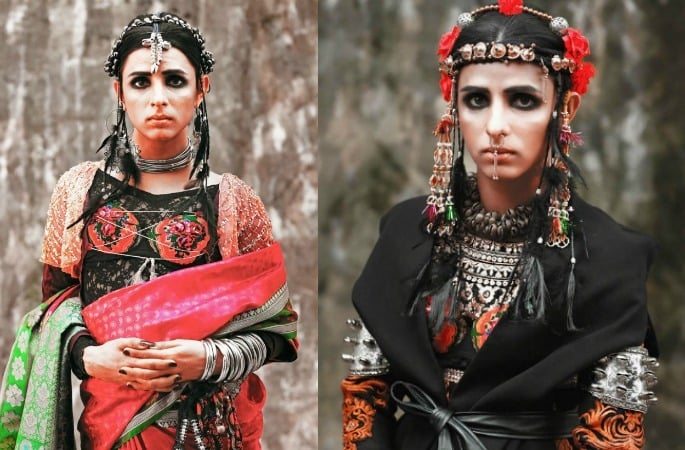"Sexuality and gender are not the same thing."
It is commonly said that sex is a matter of the body, whereas gender is created in the mind. In recent times, people are openly questioning their sexuality and gender. With this increasing, it becomes important to identify the various descriptions surrounding human sex differences.
Ever wondered about the difference between transsexual and transgender? Struggled to remember all the terms such as pans, poly and demisexuality? Fret no longer!
DESIblitz presents the definitions to understand sexual orientation and gender identity.
Understanding Sexuality & Gender
Whether we are a female, male or intersex, we all have a biological sex. As such, our gender, as male or female, is our legal and social identity.
Moreover, sexual orientation describes whether we feel sexual desires for people of the opposite gender, same gender, or even, for both genders.
This brings us to gender and identity. Our gender recognition is probably the deepest understanding of ourselves. We convey our gender identity through our behaviours. By means of acting feminine or masculine. Or even, both.
On the other hand, some of us are transgender. As such, the biological sex and gender identities are unmatchable.
We all have a sexual orientation. This means that we could be straight, bisexual, gay or lesbian. Do you often question yourself about this? Are you unsure about your sexuality?
The more you understand and come to terms with sexuality and gender, the more likely you will feel comfortable about yourself and your relationship with others around you.
Sexuality
- Heterosexuality: Sexual attraction towards people of the opposite sex (male/female)
- Homosexuality: Sexual attraction towards people of the same sex (male/female)
- Bisexuality: Sexual attraction to people of both sexes (male/female).
- Asexuality: Lack of sexual attraction towards people in general. Asexuality is different from ‘celibacy’. Celibacy is an individual choice or action rather than a natural lack of sexual attraction.
- Polysexuality: Sexual attraction towards more than one gender. Polysexuality is different from ‘bisexuality’ as bisexuality infers that there are only two genders – male and female.
- Pansexuality (Omnisexuality): Sexual attraction towards people, rather than gender. Gender is insignificant as attraction begins with the person – they don’t have ‘a type’. Pansexuals may use the term ‘gender blind’ to describe the lack of attraction towards a specific gender.
- Demi-sexuality: No initial attraction towards a specific gender. But, when a close, personal bond is formed, a ‘secondary’ liking determines an attraction. It can be said that personality is favoured over gender or sexuality.
- Intersex: A person who is not born with a clear male/female gender. This is caused by different internal conditions which affect the sexual characteristics. These conditions impact the chromosomes, gonads, sex hormones or genitals, which typically form a person’s sex at birth.
Parents are known to opt for surgical or hormonal treatment for their children. This creates a specific male or female sex for the child and socially accepted sexual characteristics. However, this decision is controversial to some.
Gender
- Transsexual: A person whose characteristics may identify with those of the opposite gender, rather than the ‘typical’ characteristics of the gender given at birth (male/ female).
However, transsexual people can be homosexual, asexual, bisexual or any other sexuality.
A typical example would be someone who is heterosexual but likes to cross-dress.
- Transgender: Someone who feels that they belong to the opposite sex (male/ female). This feeling is emotional and psychological, rather than a temporary exploration.
Many transgenders undergo surgery to have genitals which match their desired sex.
However, this does not alter reproduction. For example, a male-born person couldn’t go on to have children after having this kind of surgery.
Genderqueer ~Non-Binary
Genderqueer or non-binary are terms used to categorise all other terms, which suggest that individual gender identities do not fit into the typical male/ female genders.
Some terms which are categorised under Genderqueer or Non-Binary include:
- Multi-gendered: Someone who associates with more than one gender.
- Androgyny: Being androgynous means to have both male and female characteristics. Some describe androgyny as being between a man and woman, without distinctive male/female traits. This is seen through their fashion, identity, sexuality, lifestyle or even voice. Common terms like ‘tomboy’ could refer to someone who is androgynous.
- Third Gender: Someone who is neither man nor woman, according to themselves or other people. The third gender recognises more than the typical male or female gender.
- Two-spirited: A term used by people (usually Natives from North America), to describe- what they call ‘spiritual people’- referring to homosexuals, bisexuals and people of different genders, rather than male or female. Not all Natives believe this, but those that do identify four genders: masculine man, feminine man, masculine woman, feminine woman.
- Gender Variance (Gender Nonconformity): Someone whose behaviour doesn’t match the ‘typical’ gender norms of either male or female. For example, someone who ‘looks’ male may behave like a female, based on society’s stereotypical gender behaviour differences. People under this category may be transgender or don’t class themselves as a particular gender.
Sexuality and Gender ~ Constantly Changing
The list covers most of the common terms used to describe sexuality and gender.
Many people from communities such as South Asia may struggle to deal with their sexuality and gender, especially if they are not heterosexual. But, views are constantly changing, and there is a whole new spectrum of sexuality and gender. Even this spectrum may change in time.
Like many things that question identity, definitions may change and new terms may be created. However, it’s important to remember that sexuality and gender are not the same things.
Gender identity is an expression of how we see and feel within ourselves. Sexual orientation is often lead by sexual attraction.






























































